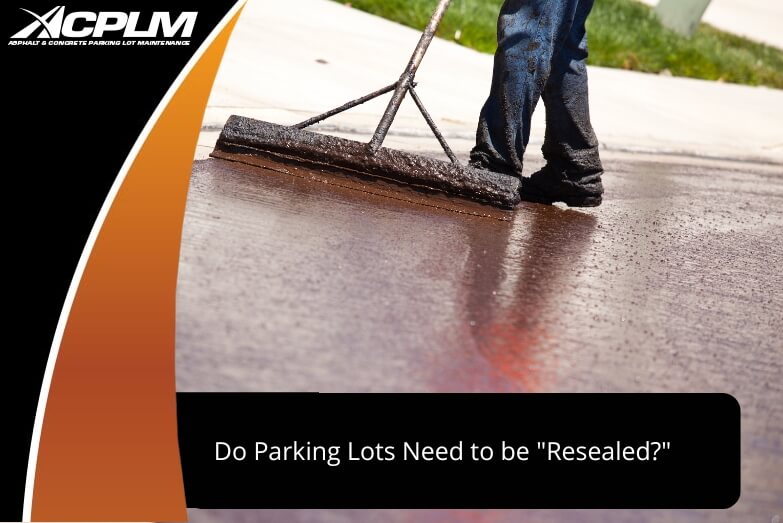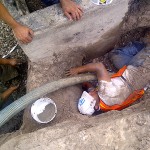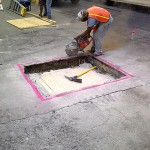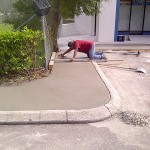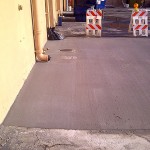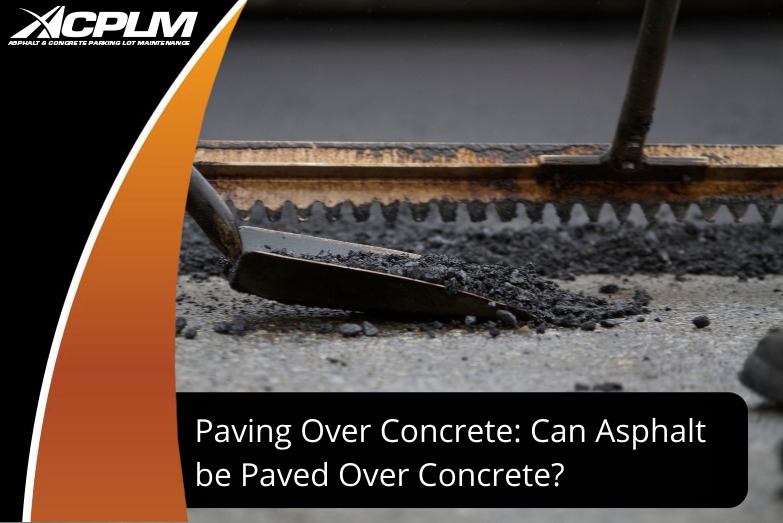
For many building owners, installing concrete commercial parking lots and walkways is standard procedure, but it comes with a slew of questions. If you have been considering replacing your worn-out walkway or parking lot, one of your top questions might have been about the feasibility of laying asphalt directly on top of concrete.
The good news is that paving over concrete with asphalt is safe in certain conditions. Check out the top reasons why it will be beneficial to pave concrete roads with asphalt.
Why You Should Consider Paving Over Concrete
Asphalt Paving is Cost-Effective
Many states and municipalities utilize asphalt paving as a road-repair procedure to save time and money and increase curb appeal. Instead of removing the existing concrete, this method includes laying asphalt on top of it. The method of paving over concrete with asphalt has reignited the interest of many since it meets the demand created by the rapidly deteriorating highways and limited funding.
Concrete pavement deterioration is a serious issue in hot climates with big trucks and frequent start/stop operations. Asphalt overlays have the potential to provide longevity, increased structural and functional capability, and lower life-cycle costs.
Asphalt pavers can provide an aesthetic appeal to aspects of public places such as crosswalks and pathways or improve the beauty of an existing outdoor living space. It is also feasible to install pavers over existing asphalt or concrete to simplify the process.
Asphalt paving over concrete is best for pavement with minor damage, although repairs should be undertaken beforehand, if required. If the concrete is significantly damaged, it should be completely removed and rebuilt with new concrete or asphalt. Paving asphalt over a well-compacted sub-base will always outperform asphalt surfaces built over an unstable base or concrete prone to shifting and expansion.
Generally, paving over concrete may help you save money on excavation costs. Excavations are costly, luckily, they aren’t needed if there is already a concrete base.
Concrete Serves as a Strong Foundation
Many tend to be concerned about the stability of paving over concrete with asphalt. However, you don’t need to worry. Concrete is a robust foundation, providing the asphalt with a good working surface to reside on. Asphalt is one of the most stable layers available, but only if it’s compacted. The more compact material is, the better the base layer is at supporting concrete or asphalt.
That being said, it’s still best to check for holes, cracks, and damage before paving concrete roads or highways with asphalt. Surfaces commonly have cracks, but if the fissures are 1″-3″ deep, they must be repaired or fixed before laying pavers or asphalt over a concrete area.
The Procedure Is Easy to Do and Saves Time
If you have a worn-out concrete parking lot or pathway that needs to be replaced, and if you’re wondering if paving over concrete is possible, the answer is yes. Should you come upon an existing concrete patio that is not in good condition, repairs will be required. However, as previously mentioned, putting asphalt on top of concrete may not be the ideal solution if the concrete is too extensively damaged.
The process of paving asphalt over concrete isn’t tedious, which makes it a good option for many. In most cases, construction workers power-wash the surface to clean it, smooth it out, and help the asphalt adhere to the asphalt more readily. Although you can also pour fresh asphalt over existing asphalt, a concrete base will provide a stable foundation.
You can fill the joints between concrete pavers using polymeric sand, which is a mixture of sand and various unique additives like silica. If given a choice between regular and polymeric sand, the latter is more durable. When the proper technique is followed, filling joints with polymeric sand and water can endure rain washout, prevent an insect infestation and inhibit the growth of weeds.
Before applying asphalt, the concrete must be as level as possible. It entails utilizing concrete to level the surface and fill in the joints and cracks. Asphalt and other materials are prone to shifting and erosion due to exposure to the environment. Leveling old concrete is important to guarantee that the asphalt has the greatest possible surface to adhere to.
Concrete is an ideal base material since it’s solid and allows for efficient asphalt compaction. Every year, thousands of kilometers of concrete roads are replaced with asphalt.
Concrete does not necessarily provide a smooth ride. Consider a period when you were driving on a rough concrete road with a steady beat. The texture is finished into the surface to provide appropriate traction on the road. This, along with slabs settling over time, can result in a rough and loud road.
Each individual concrete slab can shift at the expansion joints and if your foundation is weak, it can happen more frequently. Any asphalt overlay will be damaged over time if the concrete pavement shifts. To construct a good base for overlaying asphalt over concrete, make sure you have a sturdy concrete surface below with no expansion joint moving.
Generally, asphalt has a lifespan of 10 to 20 years. It is recommended to patch or repair the asphalt within that range to ensure its continued adhesion to concrete. Because concrete is a surface in and of itself, it does not matter how old the concrete is, as long as it’s level.
Trust in Professionals for Asphalt Paving
Commercial owners may save money and time by applying asphalt paving in Tampa when resurfacing aging parking lots. There are several advantages to paving over concrete with asphalt, especially if installed over existing asphalt. With 50 years of concrete paving experience in sidewalks and commercial parking lots, we are your local source for all of your concrete and asphalt paving needs. Call ACPLM today at 888-959-9637.







